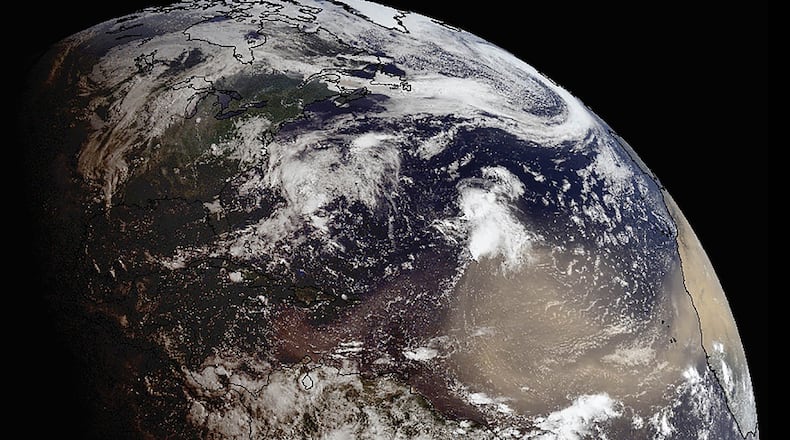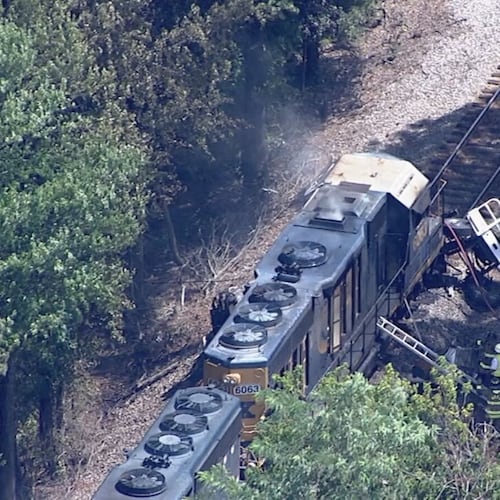A massive plume of dust floating over the Southern U.S. is likely to bring hazy skies to metro Atlanta this weekend, say local weather experts. Along with colorful sunrises and sunsets, it could also bring some concerns for individuals with respiratory issues.
“The primary concern is not necessarily weather related,” said Zachary Handlos from the School of Earth and Atmospheric Sciences at Georgia Tech. “The big issue is air quality.”
>>READ MORE: A massive ‘Godzilla’ dust plume is headed toward Georgia and the Southeast
Air quality in parts of Texas and Louisiana, where the plume was drifting on Friday, had already reached levels considered unhealthy for sensitive groups, according to airnow.gov, a partnership of federal, tribal, state and local air quality agencies.
Georgia’s air quality remained at moderate levels Friday even as the late afternoon sky began to grow hazy. Conditions could worsen over the weekend as the dust cloud continues moving into the area. The dust cloud will likely last until Sunday before it moves out of the state, said Nick Morgan, meteorologist for the National Weather Service in Peachtree City.
A strong wind current moving from east to west has been blowing the cloud — a mix of dust and sand from Africa’s Sahara Desert — across the Atlantic Ocean, Caribbean and Gulf of Mexico for just over a week, said Handlos. These dust clouds are a common occurrence, particularly at this time of year, but the size and thickness of this particular cloud, nicknamed the Godzilla dust cloud, make it the largest in a long time.
“If you look at the last 20 years, this one is in its own class,” said Marshall Shepherd, director of the Atmospheric Sciences program at the University of Georgia. “It took a while for the wind system that normally comes off the coast of Africa to get started this year, so there was so much time for that stuff to build up.”
The slow-moving cloud, traveling at speeds between 10 and 50 miles per hour at any given time, floats far above the Earth’s surface at around 20,000 feet, according to the NOAA Hurricane Research Division. In addition to bringing hazy skies wherever it blows, one NASA-funded study showed the dusty air may also cause blooms of fish-killing toxic algae in the water.
On the positive side, the elevated level of dry, dusty air could impact cloud development, according to some research, and can also make it harder for air to rise and form the rotations that create tropical storms and hurricanes. “There is no hurricane out there right now. If they did develop and we had these belches of dust coming off the coast of Africa, they would impede it,” Shepherd said.
>>RELATED: Above-normal hurricane season predicted for this year
The dust clouds tend to sweep through the skies from mid-June and usually end by mid-August, Morgan said.
Already, another belch of dust is on its way from Africa to the Atlantic, said Shepherd, but he warns that these events are not evidence of something gone horribly wrong. “It remains to be seen if that one ends up being as significant as this one,” he said, but “It is not the apocalypse. It is not the 2020 curse.”
About the Author
Keep Reading
The Latest
Featured


